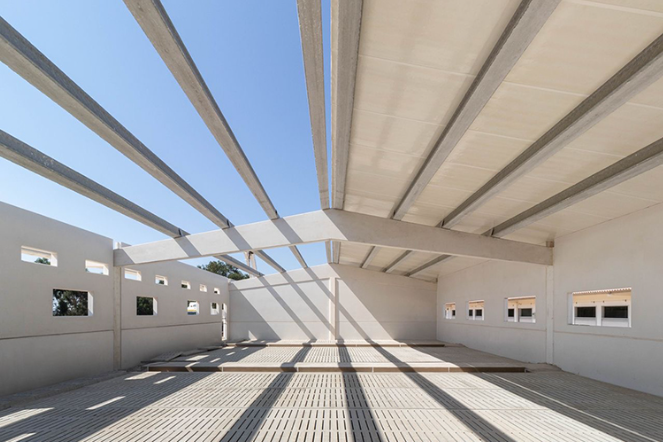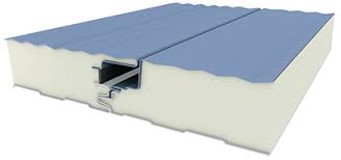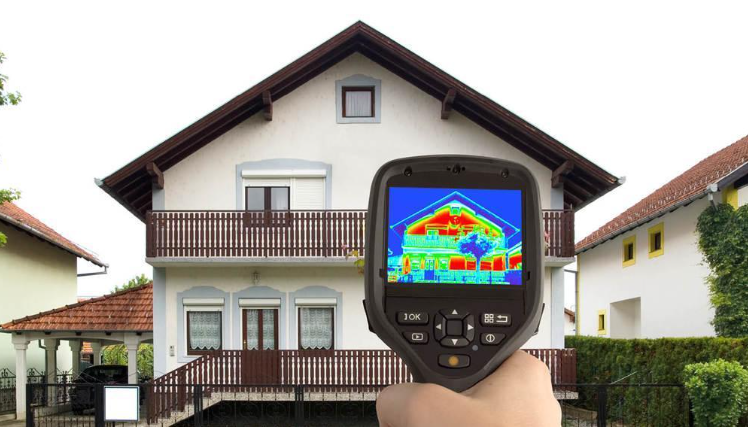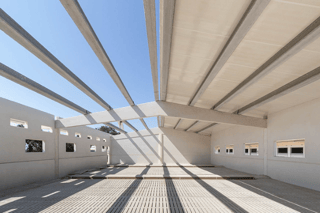The production of polyurethane rigid foam sandwich panels has become a fundamental tool for high performance building systems.

Although the processability between PIR and PUR panels is similar but with certain differentiating nuances, such as processing temperatures, higher in the case of PIR panels, or the use of adhesives to improve the adhesion between the sheet and the foam, in the case of PIR panels, although more and more PUR panels producers are also using an adhesive in certain panels to guarantee the adhesion between the sheet and the foam, the field of application of PUR/ PIR sandwich panels is very similar, and they can be used for:
- External enclosure: facades and roofs.
- Compartmentalisation of interior spaces: fire sectors, partitions, food processing rooms, clean rooms, cold rooms, etc...
Advantages of PUR/PIR sandwich panels
The advantages of PUR / PIR sandwich panels is what makes these insulation panels even more attractive for health, safety and environment:- Thermal insulation: It is one of the thermal insulation products with the lowest thermal conductivity coefficient. It guarantees the absence of thermal bridges thanks to the homogeneity of the insulation at all points of the panel. The assembly also minimises thermal bridges thanks to the joints, normally tongue and groove, between panels. Reduced insulation thickness thanks to the low thermal conductivity coefficient of the polyurethane foam.
- Optimisation of usable space, since a minimum thickness is required to achieve a maximum thermal insulation level.
- Virtually no water absorption due to the closed cell structure of the polymer, which makes them waterproof.
- Mechanical properties that give the panels great rigidity and low weight, which facilitates and economises transport, handling, installation and structural sizing. Ease of machining and cutting.
- Reaction to fire performance which makes PUR/PIR sandwich panels fire safe.
- PUR/PIR sandwich panels are a prefabricated product, sustainable in their manufacture and very light for transport to the construction site. The construction of a building, both residential and industrial, with polyurethane sandwich panels generates very little waste which makes the building process more sustainable. It is recyclable: the metal sheet is melted and the polyurethane is recycled using three techniques; mechanical recycling, chemical recycling or incineration with energy recovery. The insulating capacity of polyurethane sandwich panels helps to reduce energy consumption.
Properties of PUR/PIR sandwich panels
In terms of properties, the main difference between PUR/PIR sandwich panels lies in their composition. The foam obtained with PIR (Polyisocyanurate) systems contains a high degree of aromaticity due to the formation of the polyisocyanurate structure, providing a higher thermal stability compared to urethane (PUR) groups, thus improving its fire resistance.
The PIR foam reacts safely to fire by forming a carbonised surface layer that protects and prevents the penetration of fire into the inner layers. In the composition of PIR panels, as a general rule, there is a lower concentration of flame retardants than in PUR panels, thus generating less smoke during combustion. There are even PIR panels on the market that are free of halogen flame retardants.
Even so, the products must be tested to determine their fire behaviour with the reaction and fire resistance test methods according to current regulations depending on the location.
In terms of thermal properties, PIR remains stable in a higher temperature range than PUR.

Renewable and Recyclable Sourced Product Management
At Synthesia Technology we reaffirm our commitment to sustainability by promoting the circularity of materials and improving the environmental performance of our products, all to reduce our impact on the planet.
Since 2003, Synthesia Technology has been using BIO-based raw materials from renewable resources and recycled PET in the production of polyols, a key raw material used in the manufacture of high-performance core insulation sandwich panels with PIR technology, demonstrating that it is possible to use plastic responsibly, recycling it into a new product that helps to reduce energy consumption and CO2 emissions, to the benefit of all.
Visit our website for the most important commercial references for PIR insulation systems for continuous lamination.













